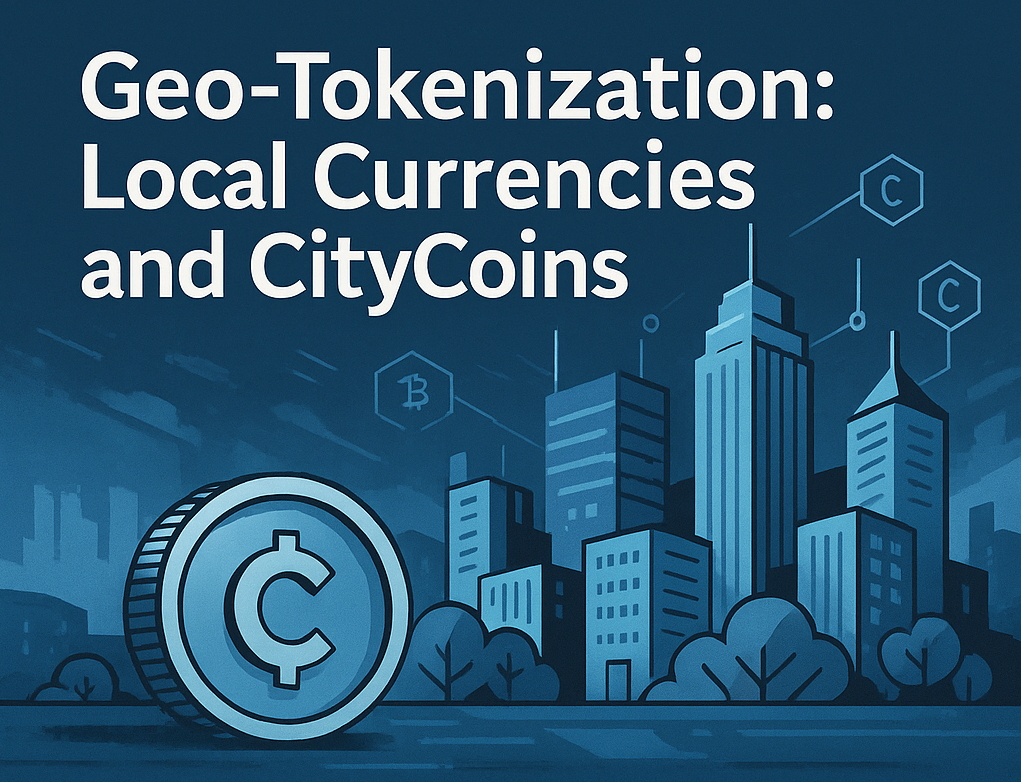Geo-tokenization: Local Currencies and CityCoins is rapidly emerging as a frontier in the evolving world of digital finance. In this article, we explore how this innovative model is reshaping how cities engage with their residents, generate revenue, and foster civic engagement through blockchain-powered solutions.
Understanding Geo-Tokenization: Local Currencies and CityCoins
Geo-tokenization refers to the implementation of blockchain-based tokens that are uniquely associated with a specific city or region. These tokens are often designed to incentivize local economic activity, support public services, and enable a deeper level of community participation in urban development.
A prime illustration of this approach in practice is the initiative known as CityCoins. These blockchain-powered assets empower citizens and city supporters to invest in the development and digital presence of urban areas.
The Rise of Local Digital Economies
Cities are increasingly behaving like economic engines with unique cultures and goals. As a result, municipal governments are searching for alternative ways to fund infrastructure, promote local businesses, and engage citizens. This is where geo-tokenization fits in. By offering digital tokens specifically designed for a city or region, municipalities can encourage spending within their local economy.
CityCoins are one of the most prominent initiatives aimed at bringing this concept to life. These digital tokens, backed by smart contracts and decentralized protocols, can be used to reward civic behavior, fund municipal projects, or even provide digital governance options.
How Geo-Tokenization Differs from Traditional Local Currencies
Local currencies aren’t new. Cities and communities have used them for decades to promote local economic growth. However, geo-tokenization builds upon these foundations by introducing blockchain technology. This adds layers of transparency, automation, and interoperability with other digital financial systems.
Instead of paper vouchers or loyalty cards, city-based tokens can be traded, staked, or integrated into smart city infrastructure. For example, parking meters, public transport, and community events could accept city-specific tokens, creating a closed-loop economic system that benefits both users and the city.
The Technology Behind CityCoins
At the heart of geo-tokenization is blockchain technology. CityCoins are often built on top of established blockchains like Stacks, which itself is secured by the Bitcoin network. This framework provides tamper-resistance, public verifiability, and long-term record integrity for all transactions.
Smart contracts enable programmable incentives. For instance, users who „mine“ city-based tokens might receive rewards while directing a portion of the proceeds to a city treasury. This treasury can then be used to support projects such as affordable housing, public art, or infrastructure upgrades.
Economic Incentives and Governance
One of the compelling aspects of CityCoins and other geo-tokenization models is their ability to align incentives. Citizens, tourists, and investors alike can participate in a city’s growth. These tokens can offer staking rewards or be used in local governance, allowing holders to vote on city-related proposals.
This type of participatory governance creates a feedback loop. The more people contribute to the city’s digital ecosystem, the more influence and benefit they can receive. This shift empowers individuals to move from bystanders to influential participants in shaping their cities.
Challenges in Adoption
Despite its potential, geo-tokenization faces several hurdles. Among the earliest and most difficult hurdles is interpreting and complying with often vague and rapidly changing regulatory requirements. Municipalities must navigate complex financial regulations before deploying blockchain-based financial instruments. Additionally, not all residents are familiar with cryptocurrencies or blockchain, creating an educational barrier.
Another concern is volatility. Digital tokens can fluctuate in value, which may affect their utility as a stable local currency. Solutions such as stablecoin pegs or hybrid models could offer a pathway to mitigate this issue.
Geo-Tokenization: Local Currencies and CityCoins in Action
Several cities have already begun experimenting with geo-tokenization. Miami and New York City are among the pioneers in this space. Their digital tokens were launched to raise funds, increase civic engagement, and showcase tech-forward leadership.
In Miami, for example, the city has received millions of dollars through the initiative. These funds are earmarked for public benefit projects. Similarly, New York’s model seeks to harness the enthusiasm of its tech-savvy population to create an additional revenue stream for city programs.
Community Engagement and Digital Citizenship
One of the greatest potentials of geo-tokenization lies in its ability to foster community engagement. By allowing residents to earn, spend, and vote using digital tokens, a new form of digital citizenship can emerge.
Imagine a scenario where a resident earns city-based tokens by volunteering or reporting infrastructure issues through a mobile app. Citizens could redeem these tokens for public amenities or engage in local cultural and civic programs. It transforms civic engagement into a gamified, rewarding experience.
Environmental and Ethical Considerations
As with other forms of digital infrastructure, it is crucial to evaluate how blockchain-based systems impact the environment. Some platforms are energy-intensive, while others prioritize sustainability and efficiency. Cities must balance the ecological impact with the anticipated civic and economic returns.
Ethical questions also arise: Who controls the issuance of tokens? How is data privacy handled? Is access equitable across all demographic groups? These are important conversations that must be part of any implementation strategy.
Geo-Tokenization: Local Currencies and CityCoins for the Future
As urbanization accelerates, cities must adopt innovative tools to manage growth and connect with residents. Geo-tokenization offers a promising path forward. When implemented thoughtfully, it can generate revenue, improve public services, and increase citizen involvement.
CityCoins, though still in their early stages, are beginning to demonstrate that localized tokens can serve as powerful tools for urban innovation. They are more than experimental currencies—they are instruments of meaningful transformation.
Conclusion
CityCoins represent an exciting evolution in civic finance and engagement. Although there are obstacles to overcome, the advantages they offer—ranging from financial transparency to deeper citizen participation—hold immense promise.
As more cities experiment with blockchain-based solutions, the knowledge gained from these early adopters will help refine the model. In time, geo-tokenization could become a standard feature of smart, sustainable, and citizen-centric cities worldwide.

















